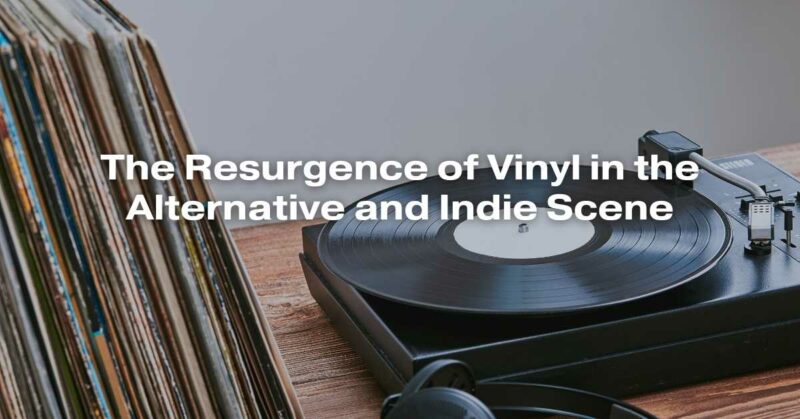In an era dominated by digital streaming platforms and compact discs, the resurgence of vinyl records in the alternative and indie music scene has been nothing short of a phenomenon. The warm, analog sound of vinyl has lured both established and emerging artists and captivated the hearts of audiophiles and music enthusiasts alike. In this article, we will explore the reasons behind the resurgence of vinyl in the alternative and indie music genres, its impact on the industry, and what this trend signifies for the future of music consumption.
A Brief History of Vinyl
Before diving into the vinyl resurgence, it’s essential to understand its historical context. Vinyl records, or phonograph records, first emerged in the late 19th century, becoming the primary medium for music distribution in the 20th century. They offered a significant leap in audio fidelity compared to previous formats like shellac records. However, vinyl saw a decline in popularity during the 1980s and 1990s as the music industry shifted toward compact discs and digital formats.
The Resurgence Begins
The revival of vinyl records in the alternative and indie music scene began in the early 2000s. Bands and artists who had grown up with vinyl as the primary medium for music consumption were drawn to its nostalgic appeal and unique sound. Some of the key factors contributing to this resurgence are:
- Sound Quality: Audiophiles have long praised the rich and warm sound of vinyl records. Unlike digital formats, which can sound cold and clinical, vinyl provides a more organic and textured listening experience. This characteristic aligns well with the organic and raw sound often associated with alternative and indie music.
- Tactile Experience: Vinyl records offer a tactile and interactive experience that digital formats can’t replicate. Fans can admire album artwork, read liner notes, and carefully place the needle on the record—a ritual that adds to the overall enjoyment of the music.
- Limited Editions and Collectibility: Many alternative and indie artists release vinyl records in limited editions or colored vinyl variants, making them highly collectible. This scarcity drives interest among fans and collectors.
- Support for Independent Record Stores: The resurgence of vinyl has breathed new life into independent record stores. These local businesses often specialize in alternative and indie music, providing a communal space for fans to discover new music and connect with like-minded individuals.
Impact on Artists and Labels
The resurgence of vinyl has had a profound impact on both independent artists and record labels. Here are some of the ways in which vinyl has benefited the alternative and indie music scene:
- Increased Revenue: Vinyl records, though more expensive to produce than digital downloads, provide a lucrative source of revenue for artists and labels. Fans are willing to pay a premium for physical copies of their favorite albums, and this has helped many indie artists sustain their careers.
- Artistic Expression: Vinyl records allow for more elaborate and artistic packaging, encouraging musicians to get creative with album artwork and design. This aligns with the DIY ethos often associated with indie music.
- Tour Merchandise: Many indie bands sell vinyl records as part of their tour merchandise. This not only generates additional income but also serves as a tangible reminder of a live concert experience.
- Niche Markets: Vinyl records cater to niche markets within the alternative and indie music scene, such as fans of underground or experimental music. This diversity helps sustain a wide range of musical subcultures.
Conclusion
The resurgence of vinyl in the alternative and indie music scene is more than just a trend; it’s a cultural shift that speaks to the enduring appeal of analog music. Vinyl records offer a unique listening experience that connects fans to the music on a deeper level and fosters a sense of community. This resurgence has breathed new life into the independent music industry, providing artists and labels with a platform for artistic expression and financial sustainability. As long as the allure of vinyl endures, it will continue to play a pivotal role in shaping the sound and culture of alternative and indie music.


